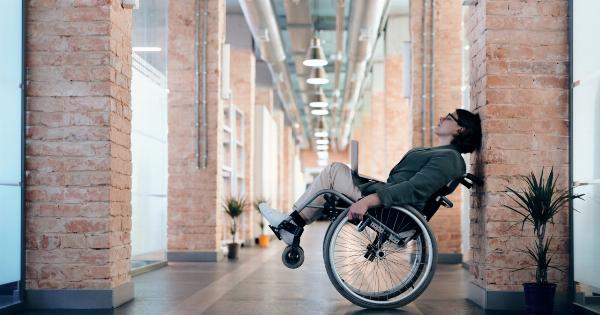Advancements in the field of neurostimulation hold great promise for patients suffering from incurable genetic disorders.
Neurostimulation is a procedure that involves the use of electrical impulses to modulate the activity of neural circuits in order to alleviate symptoms and improve quality of life.
Understanding Neurostimulation
Neurostimulation techniques involve the implantation of small devices that deliver electrical impulses to specific areas of the brain or nerve roots.
These devices can be programmed and adjusted to provide the most effective stimulation for each individual patient.
There are various types of neurostimulation techniques that can be utilized, depending on the specific needs of the patient. The most commonly used techniques include:.
1. Deep Brain Stimulation (DBS)
Deep brain stimulation involves the placement of electrodes in the brain, targeting specific areas that are responsible for the symptoms associated with the genetic disorder.
These electrodes are connected to a small battery-operated device that is implanted under the skin, usually in the chest or abdominal area. The device delivers electrical impulses, which help to regulate abnormal brain activity and improve symptoms.
2. Transcranial Magnetic Stimulation (TMS)
Transcranial magnetic stimulation is a non-invasive technique that involves the use of magnetic fields to stimulate specific areas of the brain.
During a TMS session, a coil is placed near the scalp, and magnetic pulses are delivered to the targeted area. This stimulation can modulate neural activity and provide relief from symptoms.
3. Spinal Cord Stimulation (SCS)
Spinal cord stimulation is a technique that involves the placement of electrodes along the spinal cord.
These electrodes deliver electrical impulses that interfere with pain signals, providing relief from chronic pain associated with certain genetic disorders. The electrical impulses also stimulate the release of natural pain-relieving substances, further enhancing pain relief.
4. Vagus Nerve Stimulation (VNS)
Vagus nerve stimulation involves the implantation of a device that delivers electrical impulses to the vagus nerve, which is responsible for regulating various bodily functions.
By modulating the activity of the vagus nerve, this technique can alleviate symptoms such as seizures and mood disorders that are often associated with genetic disorders.
Breakthroughs in Neurostimulation for Genetic Disorders
Neurostimulation has emerged as a game-changer in the field of treating incurable genetic disorders.
Researchers and medical professionals are continuously exploring new applications and techniques to improve the effectiveness of neurostimulation for patients suffering from a wide range of disorders.
One of the major breakthroughs in neurostimulation is the development of closed-loop systems. Closed-loop systems utilize feedback from the patient’s brain or neural activity to adjust the electrical stimulation.
This personalized approach ensures that the stimulation is optimized for each individual, leading to better outcomes and fewer side effects.
Furthermore, advancements in electrode technologies have significantly enhanced the precision and reliability of neurostimulation techniques.
Miniaturized electrodes with improved biocompatibility and durability have made the implantation process safer and more effective. These advancements have also facilitated the development of minimally invasive procedures, reducing the risks and complications associated with surgery.
The Potential of Neurostimulation for Incurable Genetic Disorders
The potential of neurostimulation in treating incurable genetic disorders cannot be overstated. While it may not provide a cure, neurostimulation can offer significant improvements in quality of life for patients.
By targeting the specific neural circuits responsible for symptoms, neurostimulation can alleviate pain, reduce seizures, improve motor function, and enhance cognitive abilities.
In addition, neurostimulation techniques can be combined with other treatment modalities to maximize the benefits.
For example, deep brain stimulation has been used in conjunction with gene therapy, with electrodes delivering the therapeutic genes directly to the affected area. This combined approach holds great promise for treating genetic disorders that involve abnormal gene expression or mutations.
Challenges and Future Directions
While neurostimulation shows great potential, there are still several challenges that need to be addressed. The high cost of the devices and procedures associated with neurostimulation can limit accessibility for many patients.
Additionally, the long-term effects and safety of neurostimulation techniques are still being researched, and further studies are necessary to fully understand the risks and benefits.
Looking ahead, the future of neurostimulation for incurable genetic disorders is promising. Ongoing research and advancements in technology will likely lead to further improvements in the effectiveness and safety of neurostimulation techniques.
Additionally, collaborations between researchers, clinicians, and pharmaceutical companies may pave the way for innovative treatments that combine neurostimulation with gene therapies or other targeted therapies.
Conclusion
Neurostimulation has the potential to revolutionize the treatment of incurable genetic disorders.
Through the targeted modulation of neural circuits, neurostimulation techniques can provide relief from symptoms and significantly improve the quality of life for patients. While there are still challenges to overcome, the ongoing advancements in technology and research indicate a bright future for neurostimulation in the field of genetic disorders.




























